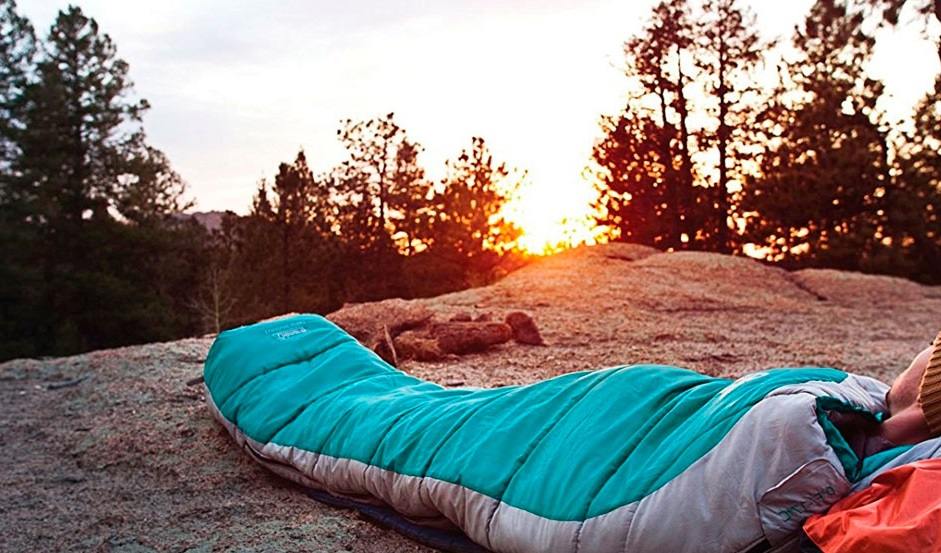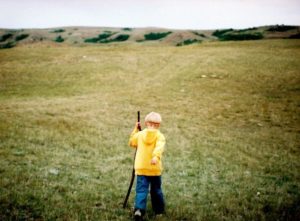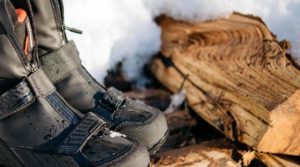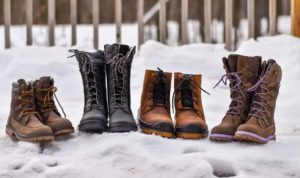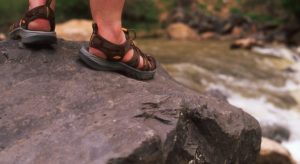If you treat it well, your sleeping bag will last for years – so it’s well worth saving up to buy a high-quality bag that’ll make you happy every time you roll it out. In general, you want the lightest, smallest-packing bag that’ll keep you comfortably warm at night. Of course, buying modern gear can’t be that simple, so let’s take a look at the most important decisions you’ll make when shopping for a sleeping bag.
Check our Review for the Best Sleeping Bags here
Shape
The backpacker’s ideal is a mummy sleeping bag since it leaves the least empty space for your body to heat at night (or extra fabric and filling that you have to pack and carry). If you just can’t get comfortable in a mummy bag, barrel bags are a little roomier but still fairly space-efficient.
Or, for the ultimate in lightweight and space efficiency, pack a backpacking comforter instead. The idea is that since the part of the sleeping bag beneath your body doesn’t do much to insulate you, you might as well not carry that extra fabric and insulation around with you.
Either way, leave the rectangular sleeping bags you buy in department stores for car camping — they’re too big and heavy to carry on a backpacking trip.
Temperature Rating
Finding a bag with the right temperature rating should be fairly common sense, but a few details may be counter-intuitive.
Start by deciding what temperature range you’re going to be camping in. There’s no perfect one-temperature-rating-fits-all bag, so if you regularly camp in very hot and very cold conditions, you’ll want to purchase two bags: A heavier bag for the cold temperatures, and a light bag, or possibly a sleeping bag liner you can use on its own, for camping in warmer hot temperatures.
If you sleep hot – that is, your body generates a lot of heat when you sleep and you don’t need a lot of covers — a bag rated for the low end of the expected temperature range should work for you. Just keep in mind that the ratings assume you’re wearing long underwear (tops and bottoms) and using a sleeping pad beneath the bag.
If you’re a cold sleeper, however, you probably won’t be comfortable sleeping in 45-degree weather with a bag rated for 45 degrees. Your options are to either buy a bag rated for cooler weather (I’d go for 30 degrees in this case), use a bag liner, or plan on wearing extra layers to the bed. I don’t recommend the latter – it doesn’t leave you many options if you’re having trouble keeping warm – but either of the first two options is fine.
Down vs. Synthetic
Down is still the lightest, most packable, and warmest of insulating materials you’ll find in a sleeping bag. Even water-resistant sleeping bags are nowhere near weatherproof, however, and down loses its insulating ability when wet, so unless you’re absolutely confident in your ability to keep your bag dry or do without if it ends up wet, synthetic insulation is a better choice; it reduces your odds of ending up in a survival situation.
Fit (Length and Girth)
Buy a sleeping bag that fits your body. Size ranges, or at least height ranges, are usually listed on the tag, or in the item specs if you’re shopping online. My general guideline is that if you shop in the petite section, look for a short bag; if you’re 5’10” or taller, you’re on the cusp between a regular and long bag.
The bag should be roomy enough for you to wiggle easily in and out of in your normal sleeping clothes (long underwear or some other base layer is the norm), and to assume your preferred sleeping position. At no point should the bag compress your body; aside from being uncomfortable, that also compresses the bag’s insulation and reduces its efficiency. Other than that minimum of room, however, any extra room inside the bag is just space your body will have to heat to stay warm.
Many bags are gender-specific, but men’s bags tend to have more girth in the shoulders, and women’s bags tend to have more girth in the hips. So don’t be afraid to try on a man’s sleeping bag if you’re a woman with wide shoulders, or a woman’s sleeping bag if you’re a man who likes a little more room in the hips.
Important things to look for
- An insulated draft tube that runs the length of the zipper — vital on cold-weather bags, less important on warm-weather bags.
- Stitching that keeps the insulation distributed evenly across the bag. If the insulation can shift between quilted “panels,” you might end up with all the insulation down around your feet — which makes for a very cold body.
- Some lower-quality bags simply don’t have enough insulation in each panel, so you’ll end up cold no matter what.
- A zipper that runs smoothly along the length of the bag and can, ideally, be operated with your dominant hand. Not all bag manufacturers offer left- and right-hand zippers in every length, but some do.
- A hood that you can easily manipulate from inside the bag.
- If you tend to get cold feet, shop for women’s sleeping bags that have extra insulation around the footbox.
Packing and Storing Your Sleeping Bag
Buy a compression sack if the bag doesn’t already come with one; it’ll make the bag a lot easier to fit in your backpack. However, do not store your bag in the compression sack; use the large, breathable sack that came with the bag so the insulation can breathe and settle.
Sleeping Pad Compatibility
All sleeping bags are meant for use with a sleeping pad, but some of them have additional features to help you keep bag and pad together. These include straps on the bottom of the sleeping bag that slip around your sleeping pad, or a slot in the bottom of the bag that’s meant to accept a sleeping pad. Test-driving the pad-and-bag combination is particularly important in the latter case. Which brings us to the most important point of all…
Try It On
Just like any other piece of hiking equipment, you should test your sleeping bag before you leave the store (or as soon as it arrives, if you’re shopping online)

